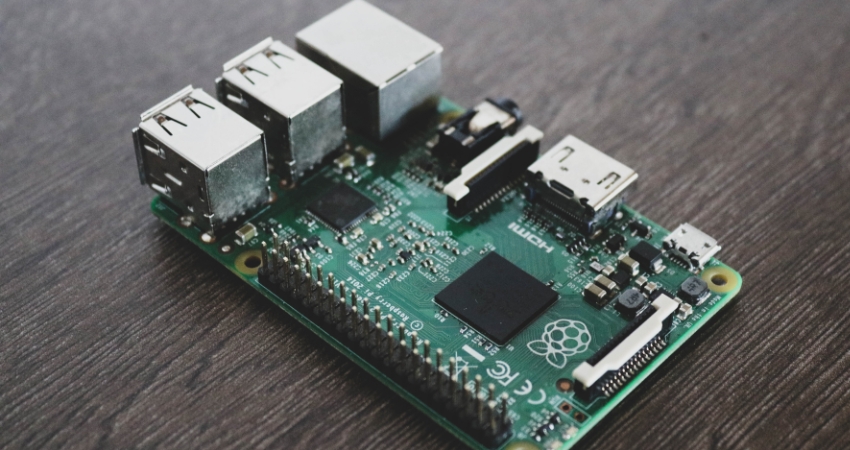India’s Semiconductor Ambitions and the Make in India Vision
India stands at a crucial turning point in its economic and technological history. Once primarily recognized as the back office of the world, India is now determined to move into the league of nations that design, manufacture, and export high-value technologies. At the center of this transformation lies the semiconductor industry. The government’s semiconductor mission, combined with the Make in India campaign, is not just about chips — it is about creating a foundation for long-term national development, industrial growth, and strategic independence.
India’s semiconductor ambitions are not born out of thin air. They reflect global realities, domestic needs, and a carefully crafted policy framework. As the world undergoes a technology-driven shift where microchips power everything from smartphones and electric vehicles to defense equipment and artificial intelligence systems, India recognizes that dependence on imports is both costly and risky. A country of 1.4 billion people with fast-growing digital aspirations cannot afford to remain on the sidelines of this revolution.
The Historical Context
For decades, India excelled in software but lagged behind in hardware. While the 1980s and 1990s saw the rise of Indian IT services and outsourcing, semiconductor fabrication remained elusive. Attempts were made to establish fabs in the 2000s, but high capital requirements, lack of ecosystem support, and inadequate infrastructure discouraged global investors.
In the early 2000s, companies like SemIndia announced big plans to set up fabrication plants, but those projects never took off due to unclear policies and high costs. By contrast, countries like Taiwan, South Korea, and later China poured billions into building an ecosystem of foundries, suppliers, and skilled engineers. This left India behind despite having the talent base in software and chip design.
The government’s 2012 National Policy on Electronics had envisioned semiconductor fabs, but it did not translate into reality. Investors were wary of power shortages, water supply issues, and long approval timelines. As a result, while India produced software engineers for Silicon Valley, it missed out on the hardware wave that defined the global economy of the past two decades.
The landscape began to change with the introduction of the Digital India initiative, the push for electronics manufacturing, and rising domestic demand. The pandemic further highlighted the vulnerability of global supply chains. As industries around the world faced chip shortages, India decided to accelerate its semiconductor journey.
The Policy Framework Driving Change
In 2021, the Government of India launched a massive $10 billion incentive plan under the India Semiconductor Mission (ISM). The policy aims to attract global chipmakers, support domestic design startups, and create a sustainable semiconductor ecosystem.
Key features include:
-
Financial Incentives: Up to 50% of project costs for eligible fabs are covered, making India globally competitive.
-
Design Linked Incentive (DLI) Scheme: Support for chip design startups and firms developing semiconductor IPs.
-
PLI Scheme for Electronics: Expansions under the Production Linked Incentive cover semiconductor packaging and components.
-
Infrastructure Development: Special Economic Zones and clusters equipped with power, water, and clean room facilities.
-
Collaboration with Global Giants: Partnerships with companies like Foxconn, Vedanta, and Micron for chip manufacturing projects.
State governments have also entered the race. Gujarat has introduced its own semiconductor policy offering land and water support, while Tamil Nadu and Karnataka are pushing their electronics clusters to attract fab investments.
These steps reflect a shift from being service-driven to product-driven, ensuring India is not just an IT hub but also a global manufacturing center.
Recent Developments and Make in India Expansions
The last few years have seen rapid progress in India’s semiconductor and electronics sector. Micron Technology announced a $2.7 billion semiconductor testing and packaging facility in Gujarat, supported by both central and state subsidies. Vedanta-Foxconn proposed a large fab investment, though it is undergoing restructuring with new partners. Global players from Taiwan, the US, and Japan are in discussions with Indian authorities to set up fabs and design units.
Simultaneously, the Make in India campaign has expanded from textiles and automobiles to electronics and high-tech sectors. Mobile phone manufacturing has seen remarkable growth, with India becoming the second-largest manufacturer of smartphones globally. The success of firms like Samsung and Apple in scaling production in India demonstrates what is possible when policies, incentives, and demand align. Semiconductor initiatives are expected to replicate this success by building a robust electronics supply chain.
India has also started investing in packaging, assembly, and testing facilities, which are more achievable in the short term compared to full fabs. This creates a stepping-stone ecosystem while the country builds capacity for full-scale fabrication.
Why Semiconductors Matter for India’s National Development
Semiconductors are not just chips — they are strategic assets. They define how nations secure their defense, power their industries, and ensure digital sovereignty. For India, developing a semiconductor ecosystem has multiple advantages:
-
Economic Growth: Estimated to generate over one million jobs in the next decade.
-
Reduced Import Dependence: India currently imports nearly 100% of its semiconductors, costing billions annually.
-
Boost to Startups: Semiconductor design and embedded systems offer opportunities for Indian entrepreneurs.
-
National Security: Domestic production ensures secure supply for defense and space industries.
-
Technology Leadership: Establishing a foothold in chips strengthens India’s role in global technology leadership.
As more devices become connected through 5G, IoT, and AI, the role of semiconductors in daily life will only deepen. For India, this is not merely an industrial opportunity but a matter of national resilience.

Challenges Along the Way
Despite the enthusiasm, India faces several hurdles in its semiconductor journey:
-
High Capital Requirements: Setting up a fab can cost $5–10 billion, and returns take years.
-
Infrastructure Gaps: Stable electricity, advanced logistics, and clean water are critical for fabs, but India is still catching up.
-
Skilled Talent Shortage: India has strong software engineers but needs more VLSI and semiconductor design specialists.
-
Global Competition: Taiwan, South Korea, and the US already dominate chip production.
-
Policy Consistency: Shifting rules or delays in clearances can make investors nervous.
Yet, India is determined to overcome these barriers through education, research, and public-private partnerships.
Education and Talent Development
The success of semiconductor manufacturing depends on talent. The government has launched initiatives to strengthen VLSI design courses in IITs and technical universities. Collaboration with international institutions ensures knowledge transfer. Programs under the Skill India mission are being aligned with semiconductor manufacturing needs.
A real-life example is the rise of chip design startups in Bengaluru and Hyderabad, often led by engineers returning from the US or Taiwan. These firms are contributing to global supply chains while training the next generation of Indian chip designers.
Private universities are also setting up semiconductor labs, while initiatives like the Chips-to-Startup program are mentoring students to move from theoretical learning to practical design. Over the next decade, India aims to produce thousands of highly skilled engineers specializing in chip design and fabrication.

Semiconductors and the Global Geopolitical Context
India’s ambitions cannot be seen in isolation. The global chip race is intensifying. The US has passed the CHIPS and Science Act to boost domestic manufacturing, while the EU has its own semiconductor program. Taiwan remains the undisputed leader through TSMC, and China is pouring billions into self-sufficiency.
For India, this is both a challenge and an opportunity. By aligning with like-minded nations through initiatives such as the Quad and bilateral agreements with Japan and the US, India is positioning itself as a trusted partner in global supply chains. This aligns with national interests of reducing dependency on single regions and strengthening economic resilience.
India also benefits from global concerns about over-reliance on China. Many companies are adopting a “China+1” strategy, and India is emerging as a preferred destination for diversification.
Make in India Success Stories and Future Outlook
The success of Make in India in sectors like mobile phones provides a blueprint for semiconductors. Companies like Apple have expanded manufacturing in India, while local brands like Lava and Micromax are making comebacks. The semiconductor push is expected to add higher value and ensure that India moves up the global technology ladder.
Looking ahead, analysts expect that by 2030, India could capture a significant share of the global semiconductor design market and establish at least 2–3 large-scale fabs. The packaging and testing industry is already showing rapid progress, thanks to facilities like Micron’s.
At the same time, India is working to create entire supply chains — from raw materials and chemicals to specialized machinery — so that the ecosystem is not dependent on imports. If successful, this would transform India into a global hub not just for electronics assembly but for advanced chipmaking.

What This Means for Indian Citizens
The impact of India’s semiconductor mission will reach far beyond industrial parks and policy corridors. Students in engineering colleges will find new career opportunities in chip design and research. Professionals working in IT may shift into product engineering roles. Entrepreneurs will explore hardware startups, moving India from an app economy to a product economy.
For middle-class families, the availability of locally made semiconductors could mean cheaper consumer electronics, faster 5G adoption, and access to advanced healthcare devices at lower costs. For rural India, the spread of connected devices could improve education, healthcare delivery, and financial inclusion.
Consumers will also benefit from lower prices, greater product availability, and faster adoption of technologies like 5G, electric vehicles, and AI-enabled devices.
Takeaways and Actionable Guidance
-
For Students: Focus on electronics, VLSI design, and semiconductor courses. The demand for skilled engineers is set to rise exponentially.
-
For Professionals: Upskill in semiconductor-related fields such as embedded systems, chip testing, and hardware-software integration.
-
For Businesses: Explore partnerships in packaging, logistics, and ancillary services that will grow around semiconductor fabs.
-
For Policymakers: Maintain consistency in policy, ensure power and water supply, and support talent-building initiatives.
India’s semiconductor ambitions represent more than an industrial shift; they reflect a national transformation. By combining policy support, Make in India expansions, and global partnerships, the country is building the foundation of a technology-driven economy. Challenges exist, but so do opportunities. With determination, strategic execution, and public-private collaboration, India is on the path to becoming not just the world’s IT hub but also a semiconductor powerhouse.
This is not merely about chips — it is about shaping the future of India’s economy, security, and innovation for decades to come.









